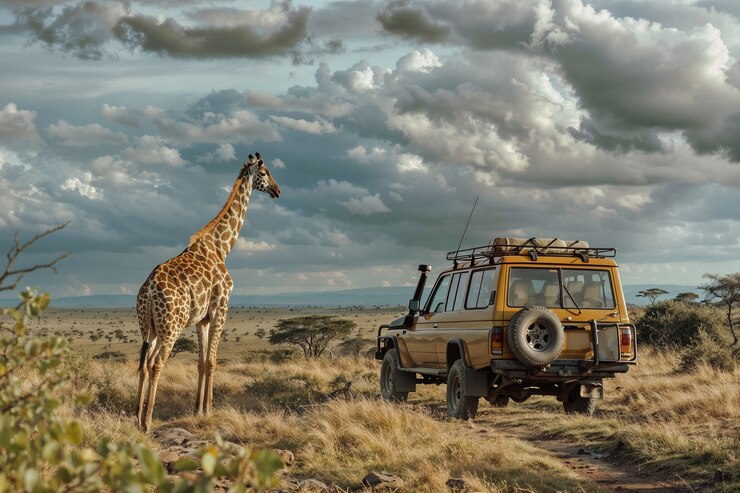Kruger National Park, located in the heart of South Africa, is one of the most iconic destinations for nature and safari enthusiasts. Spanning nearly 20,000 square kilometers, this park is home to an incredible diversity of flora and fauna. Exploring its vast savannas and dense bushland promises a unique experience where visitors can observe the famous “Big Five” —lions, elephants, leopards, rhinos, and buffalos— in their natural habitat.
What Makes Kruger National Park Special?
Kruger National Park is not only the largest safari park in South Africa but also one of the oldest, established in 1898. Its significance lies in its diversity of species, both animal and plant, as well as the personalized experiences it offers. From guided safaris in off-road vehicles to walking tours in the wild, this destination combines adventure and environmental education exceptionally well.
Key Facts:
- Size: Approximately 19,485 km².
- Animal species: Over 500 types of birds, 147 mammals, and 114 reptiles.
- Best seasons: Between May and September (dry season) for better animal visibility.
Planning Your Visit
To make the most of your safari in Kruger Park, good planning is essential. Below are some key tips:
1. Choosing the Best Time of Year
While the park is open year-round, the dry season (winter in South Africa) is ideal for animal spotting. During this time, the vegetation is lower, and animals gather near water sources.
2. Accommodation Options
The park offers a wide range of options, from basic campsites to luxury lodges. Some of the most popular include:
- Skukuza Rest Camp: Ideal for families, with restaurants and activities.
- Lower Sabie Rest Camp: Famous for its view of the Sabie River.
- Singita Lebombo Lodge: A luxury option with spectacular views.
Whether you are traveling on a budget or seeking a high-end experience, Kruger National Park accommodates every preference. Advanced booking is recommended, especially during peak seasons, to secure your desired lodging.
3. Types of Safaris
The park allows various ways to explore it:
- Self-guided safari: You can drive your own vehicle along designated routes.
- Guided safaris: Led by experts who ensure close encounters with animals.
- Walking safaris: Accompanied by armed rangers to ensure safety.
Each type of safari offers a unique perspective of the park, catering to different levels of adventure and interest.
Must-Have Experiences
A visit to Kruger National Park is not just about seeing animals; it also includes cultural immersions and stunning landscapes.
1. Big Five: The Stars of the Park
Spotting the “Big Five” is a dream for many visitors. Here’s a brief guide to increase your chances:
- Lion: Often found in open areas during the early hours of the day.
- Elephant: Common near rivers and forested areas.
- Leopard: Hard to spot, often found in trees or rocky areas.
- Rhino: Concentrated in the southern part of the park.
- Buffalo: Move in large herds near water sources.
Patience and a keen eye are key to successful wildlife viewing. Early morning and late afternoon drives often yield the best results.
2. Bird Watching
With over 500 species, Kruger is a paradise for bird watchers. Some notable species include the giant kingfisher, white-faced vulture, and marabou stork. Bird hides scattered throughout the park offer perfect spots for photography and observation.
3. Landscapes and Sunsets
The park offers impressive viewpoints, such as the Olifants River Gorge, providing panoramic views of the Olifants River. Sunsets in Kruger are particularly magical, painting the sky with golden and orange hues. Don’t miss the opportunity to capture these moments on camera.

4. Cultural Experiences
Beyond wildlife, Kruger National Park is rich in history and culture. Nearby communities often share their traditions through music, dance, and storytelling. Participating in these activities can deepen your appreciation for the region and its people.
Tips for a Safe and Successful Safari
A safari can be thrilling, but it also requires caution. Be sure to follow these recommendations:
- Follow the rules: Do not leave your vehicle outside permitted areas.
- Avoid feeding the animals: This can alter their natural behavior.
- Stay hydrated: Especially during the summer months.
- Wear appropriate clothing: Neutral colors and sun protection.
- Bring binoculars: Essential for observing details from a distance.
- Keep noise to a minimum: This ensures you don’t disturb the animals.
Proper preparation ensures not only your safety but also the preservation of the park’s delicate ecosystem.
Environmental Impact and Conservation
Kruger National Park plays a crucial role in the conservation of African biodiversity. Through anti-poaching initiatives and educational programs, the park works to ensure future generations can enjoy its natural wealth. As a visitor, you can contribute by:
- Choosing sustainable tour operators.
- Reducing your ecological footprint during the visit.
- Participating in donations or volunteering.
Kruger’s conservation efforts have made significant strides in protecting endangered species like rhinos. Every visitor plays a part in supporting this vital mission.
Conclusion
A safari in Kruger National Park is a transformative experience. From close encounters with the iconic Big Five to the contemplation of stunning landscapes, every moment in this park is an opportunity to reconnect with nature. The blend of adventure, education, and cultural exchange ensures a memorable journey for all who visit.
Plan your trip, follow our recommendations, and get ready to create unforgettable memories in one of the most fascinating destinations in the world.
Don’t wait any longer and make Kruger National Park your next adventure!
